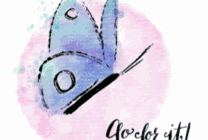Unfaithful love or loyalty? Let the animal boss teach you how to be a man.

Unfaithful love or loyalty? This is a problem. In the animal world, monogamy, polygamy and even polyandry are common. On this day, let's introduce those monogamous animals.
Affectionate vole
In the prairie of Illinois, in the spring, young prairie voles (Microtus ochrogaster) will leave their parents and start their own small families. Their "wedding" is gentle and wild, with two voles sniffing, licking, rubbing and combing each other's hair and mating 15-30 times a day. Once married, they stay together, build nests and take care of their children. However, female rats may also give birth to the cubs of other males, indicating that voles are not completely "loyal" animals. The couples of 3x4 voles never give up for the rest of their lives, and if one partner dies, less than 20% of the voles will accept a second wife or husband.
Although the private life is very romantic, prairie voles also have a violent side. In less than a day after mating, voles suddenly become disgusted with "outsiders" and attack others other than their "family".
Frequent mating causes voles to secrete hormones such as oxytocin and antidiuretic hormones, which are magic potions that manipulate voles' love. If we inject the male with antidiuretic hormone, he will be very affectionate to the female, not marry her, and fight with other voles. If we use chemicals to prevent antidiuretic hormones from working, male prairie voles will become indifferent and feel they will no longer love. If the female is injected with oxytocin, she will become enthusiastic about the male, as if he would not marry. Oddly enough, oxytocin does not make female prairie voles violent, so there should be another reason why females have a bad temper.
A pair of loving prairie voles. Picture: pinterest
The root cause of the potion that makes voles fall in love lies in their brains. All mammals can secrete oxytocin and antidiuretic hormones, but where these two hormones play a role in the brain varies from species to species. Prairie voles and their relatives, the mountain vole (Microtus montanus), have different locations in their brains to receive oxytocin and antidiuretic hormones, which makes their behavior very different. The mountain vole is so confused that the male runs away immediately after mating, and no matter how many hormones you inject it, it won't make it fall in love with anyone.
In other words, prairie voles are born "love species". Among mammals, monogamous species like it account for only about 3%.
Open the harem? Can you afford the milk powder?
Monogamy is a difficult problem in evolutionary biology. In theory, the more "unfaithful" an animal is and the more sex it has sex with, the more children it will leave behind. This is especially true in male animals, because sperm are much smaller and "cheaper" than eggs. A male animal can produce a lot of sperm and get many females pregnant. Legend has it that Ismail, king of the Alawite dynasty in Morocco, has more than 500 wives and concubines in the harem, and he has 888 children.
If the harem can make the heirs of animals prosper, then why hang them from a tree? In fact, what we should ask is: do you think any spring onion can afford the harem?
Polygamy of one male lion and two female lions is not uncommon in the animal kingdom. Picture: Uniqornia / weheartit.com
Some animals can be gathered together in large groups, while others are not. The most important factor here is ecological conditions. For example, when food resources are very scarce, if animals gather in a group, everyone will starve to death because of lack of food, and the harem will be out of the question.
Moreover, when eating is a problem, if you meet the same sex, you will only worry that it will compete with you for food, and you will not think about it in terms of shame at all. The reason why prairie voles are so affectionate may be that they live in a resource-poor environment, and each pair of voles stick to their own territory and do not allow other voles to invade. Internal warmth and external violence, for voles, are one and two sides.
Another reason for the emergence of monogamy is that it is too difficult to raise children, which must be well understood by human beings. Not everyone can afford milk powder for many children like Ismail. If a lot of your wives and concubines give birth to a lot of children and then all starve to death, the harem will do you no good. So it would be better for a couple to raise one or more children together.
Willing to be a winged bird in heaven
The most classic example of this happens to be birds. "look up at a hundred birds flying, big and small must fly." there is an unusually large number of monogamy in birds (more than 90%). Chicks need a lot of energy to grow up to fly in a short period of time, so birds usually have an amazing appetite. We have all seen mother and father birds shuttling back and forth in the air in spring, carrying worms into the chicks' mouths, which is indeed a very hard work. The chicks of the variegated tit (Parus varius) eat five times an hour and are fed jointly by their parents.
Like humans, family life will be smoother if birds' couples work together. For example, the "old couple" of Rissa tridactyla, who got together last year, laid eggs earlier and raised more birds than the newly married "newlyweds" this year. Because the cooperation of "old husband and wife" has more tacit understanding, this may be the reason why some birds are reluctant to give up the "original match".
A pair of three-toed gulls look after their children on the cliff. Photo: T. M ü ller / wikipedia
Time is another factor affecting monogamy. If the breeding time of an animal is very short, such as some frogs and seabirds, the possibility of "stepping on two boats" will be greatly reduced. Because everyone is "falling in love" at the same time (kind of like college? By the time you find a spouse, the rest of the opposite sex will already be taken.
The desire for protection can also lead to monogamy. Like food, the spouse itself is a cherished resource. The current genetic testing technology allows us to do a "paternity test" for wild animals, and it is found that the offspring of many birds have the masterpiece of "Lao Wang next door." It was terrible to take the trouble to raise the baby, only to find that it was not his own cub. To make matters worse, many male animals kill babies. When a female with a child is found, she kills her child before mating with her mother.
The male lion kills the baby, which can promote the female lion to estrus as soon as possible. Picture: Paul Joynson Hicks, Barcroft / YouTube
Male animals can watch their mates all day and don't let their green hats fall on their heads, but it takes time and energy to look at their wives. When they have more wives, they can't afford it, so they can only keep a close eye on the one in front of them. The small and lovely canine antelope (Madoquaspp.) is a rare monogamous antelope. The male canine antelope does not protect its children, but its wife is very protective. He always follows his wife all the time, leaving his own scent everywhere, on the one hand, to mark the territory, and on the other hand to announce that the female antelope has been "taken care of".
The Kirschner antelope Madoqua kirkii, pictured above as a female and below as a male. Picture: Yathin S Krishnappa / wikipedia
If you love, we will be together for the rest of your life.
Finally, if there is little chance of finding a "partner", then don't expect "there are plenty of fish in the sea". Perhaps the best example of this is the parasite, which can't walk, has no eyes and no brain. living in chaos in other people's bodies, "talking about marriage" must be very difficult. So when they meet a mate, they tend to stay together forever.
In some species of schistosomiasis, such as Schistosoma japonicum, mature females and males stick together all their lives. The short and thick male has a depression called "holding the female groove". He will hold the slender female so that the worm with no hands and no feet can hug his wife (shamelessly).
- Prev

Asparagus leaves turn yellow overnight. you must have made a mistake.
Asparagus is beautiful with green leaves and beautiful posture, but in the process of maintenance, it is found that its leaves sometimes turn yellow overnight. It turns out that you made a mistake. The last asparagus originated in southern Africa.
- Next

Plain sailing is so smooth that the green flowers burst.
Plain sailing, flowers and leaves are both beautiful, colorful and elegant, shady and easy to raise, deeply loved by people. Raise a pot at home, a beautiful environment, but also bring a good mood, then how to maintain smooth sailing? Watering is very important, the following is to introduce Yifan.
Related
- Wuhan Hospital Iron Tree Blooming Result Was Instantly Frightened by the Gardener Master
- Which variety of camellia is the most fragrant and best? Which one do you like best?
- What is the small blue coat, the breeding methods and matters needing attention of the succulent plant
- Dormancy time and maintenance management of succulent plants during dormancy
- Minas succulent how to raise, Minas succulent plant pictures
- What are the varieties of winter succulent plants
- How to raise succulent plants in twelve rolls? let's take a look at some experience of breeding twelve rolls.
- Attention should be paid to water control for succulent plants during dormant period (winter and summer)
- Watering experience of twelve rolls of succulent plants
- Techniques for fertilizing succulent plants. An article will let you know how to fertilize succulent plants.

